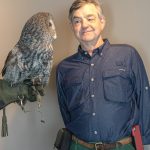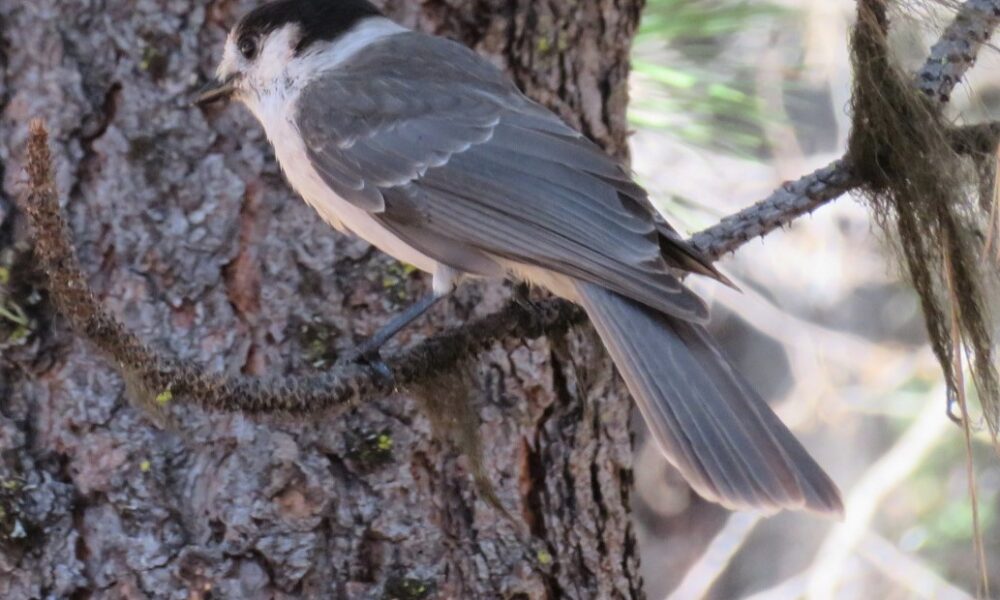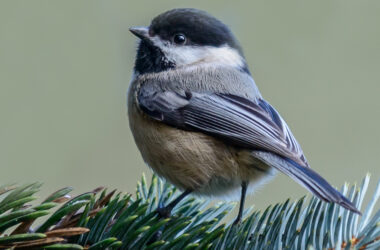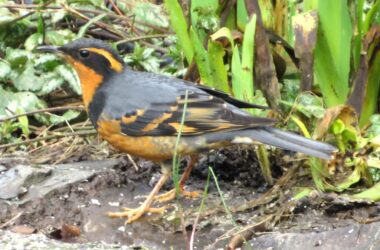The gray-colored jay has been re-christened as Canada jay. It’s had many other popular names before: gray jay, whiskey jack, camp robber, venison hawk. Perisoreus is this bird’s scientific genus. There are only two other species in the genus. All three are native to forests of the Northern Hemisphere. More distant relations include raven, crow, magpie, rook, jackdaw, other jays and Clark’s nutcracker. We know this family—the Corvids—are smart, mostly social and very good at adapting to change. Many do very well in urban or farming areas.
Canada jays are notoriously familiar.They know we are here to serve. In campgrounds they will watch picnic tables, check out open tents.One western legend is that they earned their mining camp nickname during the California Gold Rush — “whiskey jacks.” Any miner who would sneak back to camp to drink all the whiskey could blame these birds: “Whiskey jacks been at it again.”These birds were noted for taking food scraps, shiny objects or anything they coveted from campsites.Sometimes in plain sight.
In much of their range these jays are now in montane habitat. But along the north coast here in Oregon you can find them not far above sea level. Canada jays are also present in the Coast Range, Cascades and the mountains of northeastern Oregon — forest required, naturally. Click here for the Oregon Breeding Bird atlas map for Canada Jay.
Cornell’s All About Birds says: “The deceptively cute Canada Jay is one of the most intrepid birds in North America, living in northern forests year-round and rearing chicks in the dark of winter. Highly curious and always on the lookout for food, Canada Jays eat just about anything, from berries to small animals. They may even land on your hand to grab a raisin or peanut. During summer they hoard food in trees to sustain themselves through bleak winters.”
Florence Merriam Bailey wrote the first handbook on western birds (1902). She often spent summers in wilder parts of the western U.S. She had experience with this species: “A band of jays visited Mr. Bailey’s camp (on Mt. Hood), and the men amused themselves at the jays’ expense by throwing soggy pancakes to them. The birds could not fly off with the heavy cakes, but considered them such unwonted delicacies that they would drag them around over the ground worrying off pieces to fly away with.”
Poor birds, pancakes for breakfast. Wish I’d been there.
The Canada jay is the same size as our scrub and Steller’s jays here in the Willamette Valley. And they will train you not to leave your sandwich on the campsite picnic table.

For information about upcoming Salem Audubon programs and activities, see www.salemaudubon.org, or Salem Audubon’s Facebook page.
Harry Fuller is an Oregon birder and natural history author of “Freeway Birding” and the newly-published “Birding Harney County.” He is a member of the Salem Audubon Society. Contact him at [email protected] or atowhee.blog. His “Some Fascinating Things About Birds” column appears regularly in Salem Reporter.
STORY TIP OR IDEA? Send an email to Salem Reporter’s news team: [email protected].
SUPPORT OUR WORK – We depend on subscribers for resources to report on Salem with care and depth, fairness and accuracy. Subscribe today to get our daily newsletters and more. Click I want to subscribe!

Harry Fuller is an Oregon birder and natural history author of three books: “Freeway Birding,” "Great Gray Owls of California, Oregon and Washington," and "San Francisco's Natural History--Sand Dunes to Streetcars." He leads birding trips for the Malheur Field Station. He is a member of the Salem Audubon Society, and leads bird trips locally. Harry has just published a new book, BIrding Harney County.









